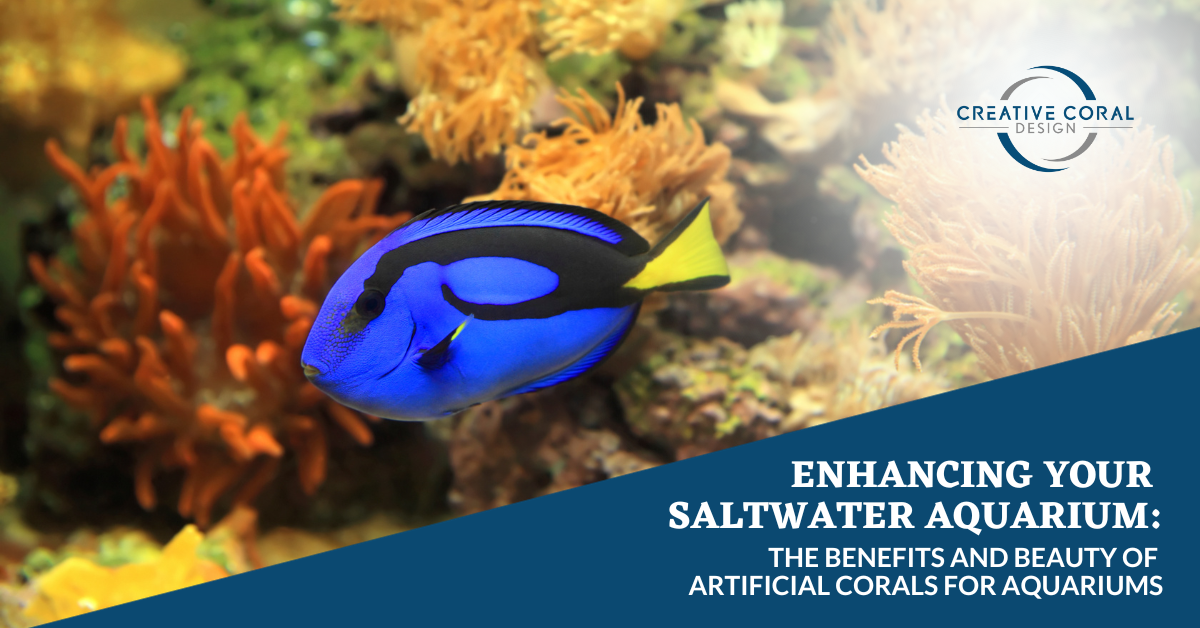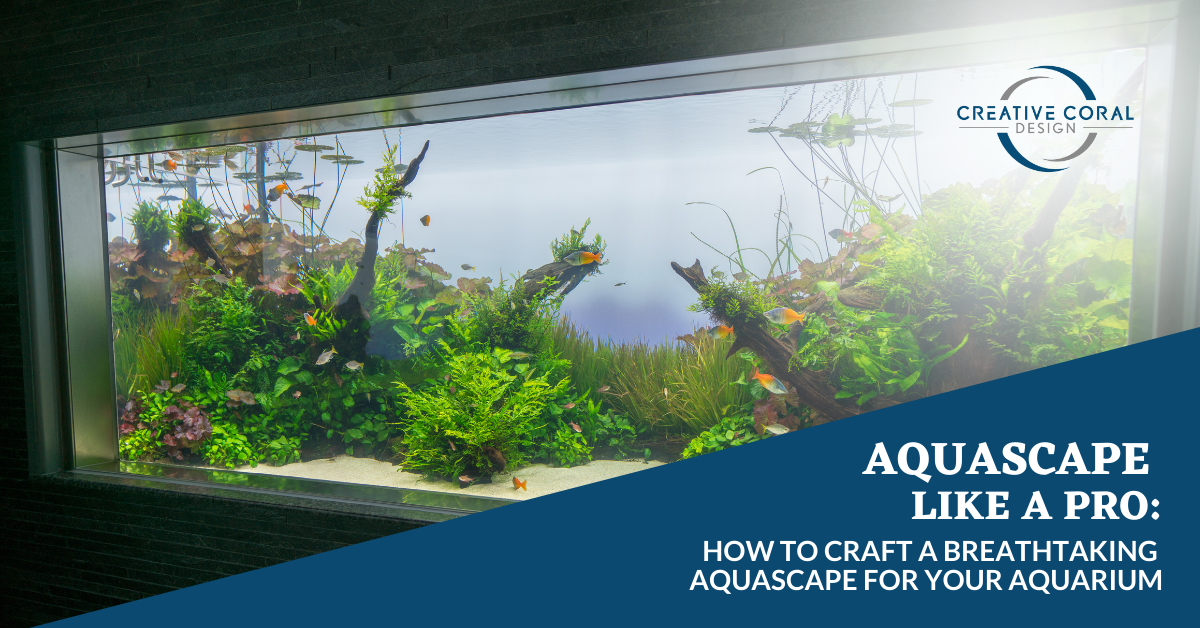Artificial corals are a popular and beneficial addition to saltwater aquariums, providing an alternative and sustainable solution to natural corals. These synthetic reef structures offer various advantages, enhancing the aesthetics of the aquarium while promoting the well-being of fish and live corals. In this article, we will explore the myriad benefits of artificial corals and discuss how they can enhance your saltwater aquarium experience.
Table of Contents
Maintaining a thriving saltwater aquarium can be a rewarding endeavor, but it also requires careful attention to create a natural and balanced ecosystem. Artificial corals have emerged as a practical and environmentally-friendly option for recreating the beauty of coral reefs within aquariums. These man-made structures mimic the appearance of real corals while offering unique advantages that benefit both hobbyists and marine life.
What are Artificial Corals?
Artificial corals are synthetic replicas of natural corals that are specially designed for aquariums. These replicas are crafted using non-toxic casting materials, which simulate the texture and appearance of real coral. Artificial corals come in a wide range of shapes, sizes, and colors, allowing hobbyists to create visually captivating and diverse underwater environments.
Benefits of Artificial Corals
1. Aesthetics and Realism
One of the primary benefits of artificial corals is their ability to enhance the visual appeal of saltwater aquariums. These replicas are molded from real coral skeletons and closely resemble real corals, creating a realistic and vibrant underwater landscape. Artificial corals often exhibit intricate detailing, capturing the intricate textures and color patterns observed in natural coral reefs. By incorporating these visually appealing structures, aquarium enthusiasts can create a captivating and aesthetically pleasing display.
2. Diverse Shapes, Colors, and Sizes
Artificial corals offer a vast range of shapes, colors, and sizes that can be tailored to individual preferences and aquarium setups. From branching corals to encrusting formations, hobbyists have the freedom to design and customize their underwater environment. Additionally, artificial corals are available in various vibrant hues, complementing the colors of fish and other live corals. This versatility enables hobbyists to create unique and visually striking aquarium landscapes.
3. Low Maintenance and Durability
Unlike live corals, artificial corals require minimal maintenance. They do not rely on specific lighting, water flow, or nutrient levels to thrive, making them an attractive option for beginners or those seeking a low-maintenance setup. Furthermore, artificial corals are durable and long-lasting, ensuring they won’t deteriorate or break easily. This durability reduces the need for frequent replacements, saving both time and money for aquarium enthusiasts.
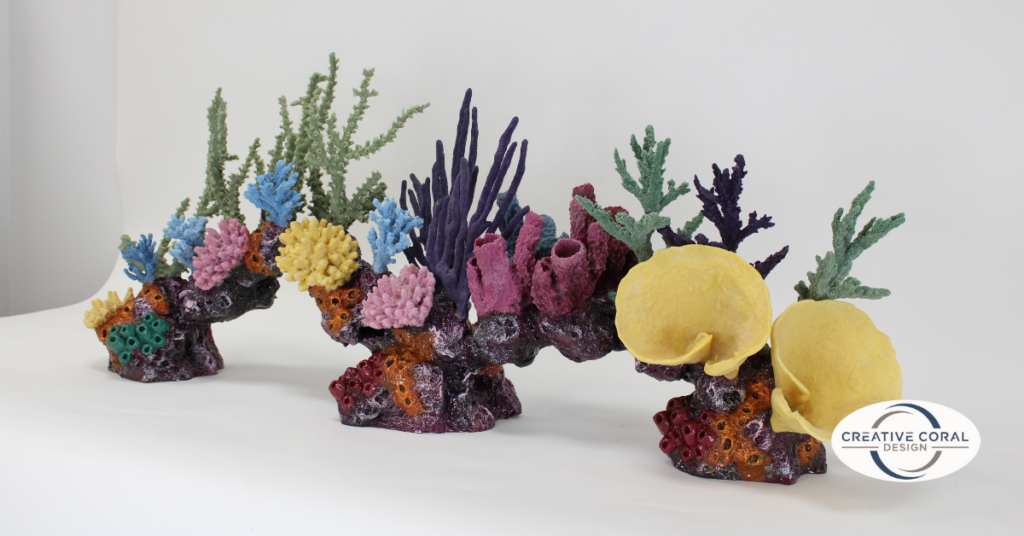
4. Promote Fish and Coral Health
Artificial corals offer more than just aesthetic appeal; they also contribute to the well-being of fish and live corals. These structures provide hiding spots and shelter for fish, reducing stress and increasing their overall health. In the case of live corals, artificial corals can serve as hosts for beneficial symbiotic organisms, such as polyps or algae. These organisms can contribute to the coral’s nutrition and aid in its growth, fostering a healthier reef environment.
5. Environmental Conservation
The use of artificial corals in saltwater aquariums promotes the conservation of natural coral reefs. By reducing the demand for live corals harvested from the ocean, the impact on fragile reef ecosystems is minimized. Artificial corals offer a sustainable alternative, ensuring that marine life, including endangered coral species, can thrive undisturbed in their natural habitat.
Choosing the Right Artificial Corals
When selecting artificial corals for your saltwater aquarium, several considerations should be taken into account to ensure their compatibility and authenticity.
Consideration of Coral Types and Species
Artificial corals are available in a wide variety of shapes and sizes, imitating different types of corals found in nature. It is crucial to research compatible coral species that match the natural surroundings you wish to recreate. Some types of artificial corals are better suited for specific fish species or aquarium environments, so choosing appropriately will guarantee a harmonious and realistic setup.
Matching Corals with Aquarium Environment
To create a cohesive and natural-looking aquarium, it is essential to consider the existing environment, including lighting intensity, water flow, and other inhabitants. Matching the characteristics of artificial corals to these conditions ensures the well-being of both the synthetic and live organisms within the tank. It is advisable to consult with experts or experienced hobbyists to determine the best options for your specific setup.
Quality and Authenticity
To achieve a convincing appearance, it is vital to invest in high-quality artificial corals. Look for corals that display intricate details, realistic coloring, and a natural texture. Authentic-looking artificial corals will seamlessly blend with live corals, providing an immersive underwater environment for your marine inhabitants.
10 Essential Fish Tank Accessories
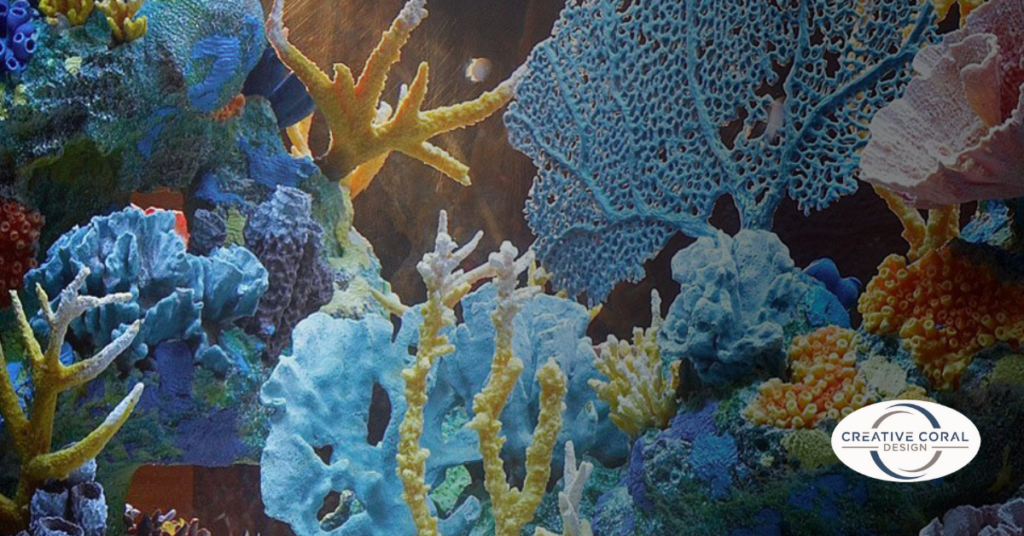
Setting Up Artificial Corals
To maximize the visual impact of artificial corals and ensure the well-being of the aquarium’s inhabitants, careful consideration must be given to their placement and arrangement.
- Placement and Arrangement
When placing artificial corals, consider the preferred habitats of the fish species and live corals in your tank. Create appropriate zones, such as open swimming areas, hiding spots, and coral cover. By strategically positioning the artificial corals, you can mimic the natural reef structures found in the wild, providing a comfortable and engaging environment for the aquarium’s inhabitants.
- Mimicking Natural Reef Structures
Artificial corals can be arranged to resemble a natural coral reef structure, incorporating various shapes, sizes, and orientations. Create a diverse landscape by interspersing corals of different types, maintaining an organic and visually appealing composition. This arrangement not only enhances the aesthetics but also offers a more comfortable and stimulating environment for the marine life in the tank.
- Safety Considerations
When setting up artificial corals, safety should be a top priority. Ensure that the corals are securely anchored in place to prevent accidental displacement by strong water currents or curious tank inhabitants. Take care to position them away from delicate live corals to avoid potential damage. Regularly inspect the attachment points to guarantee the stability of the corals within the aquarium.
Freshwater vs Saltwater Aquarium: What’s Best for Your Home?
Maintenance and Cleaning
Proper maintenance and cleaning of artificial corals are crucial to the longevity of their appearance and functionality within the saltwater aquarium.
- Cleaning Techniques
Artificial corals can accumulate debris and algae over time, which can dull their appearance. Cleaning can be done by gently brushing the corals using a soft brush or toothbrush. It is essential to avoid using any harsh chemicals or abrasive materials that could damage the corals. Typically, rinsing them in fresh water or gently scrubbing them with a soft cloth is sufficient to restore their natural sheen and vibrancy.
- Pruning and Replacing Artificial Corals
Occasionally, certain parts of artificial corals may become damaged or discolored. In such cases, pruning or removing the affected areas can help maintain the overall aesthetics of the aquarium. If a coral becomes extensively damaged, it may be necessary to replace it entirely. Regular inspection and prompt action ensure that the artificial corals remain visually appealing and harmonious with the overall aquarium ecosystem.
- Preventing Algae Growth
To prevent excessive algae growth on artificial corals, it is essential to maintain water quality by regularly testing and addressing any imbalances. Adequate filtration, appropriate lighting, and proper nutrient management will help mitigate algae growth. By maintaining a healthy and balanced aquarium environment, natural algae growth on artificial corals can be controlled.
5 Tips To Maintain Aquarium Water Quality
Combining Artificial Corals with Live Corals
Artificial corals can be combined with live corals in a saltwater aquarium, but caution must be exercised to ensure compatibility and avoid conflicts.
Compatibility and Symbiosis
Certain types of live corals can coexist with artificial corals, forming a visually stunning and functional symbiotic relationship. Carefully choose live coral species that can thrive alongside the artificial corals without outcompeting them for space or resources. Establishing a symbiotic balance will create a captivating and harmonious interplay between the artificial and live corals.
Avoiding Competition and Aggression
Some live corals, particularly aggressive or fast-growing species, may pose challenges when combined with artificial corals. Aggressive corals may overgrow the synthetic structures or compete for space, leading to conflicts and potential damage to the artificial corals. It is advisable to research the compatibility of live corals with artificial ones to avoid such issues and maintain a balanced and thriving marine environment.
Living Reef Vs. Artificial Reef Aquariums: 5 Things to Consider Before Buying Your Dream Aquarium
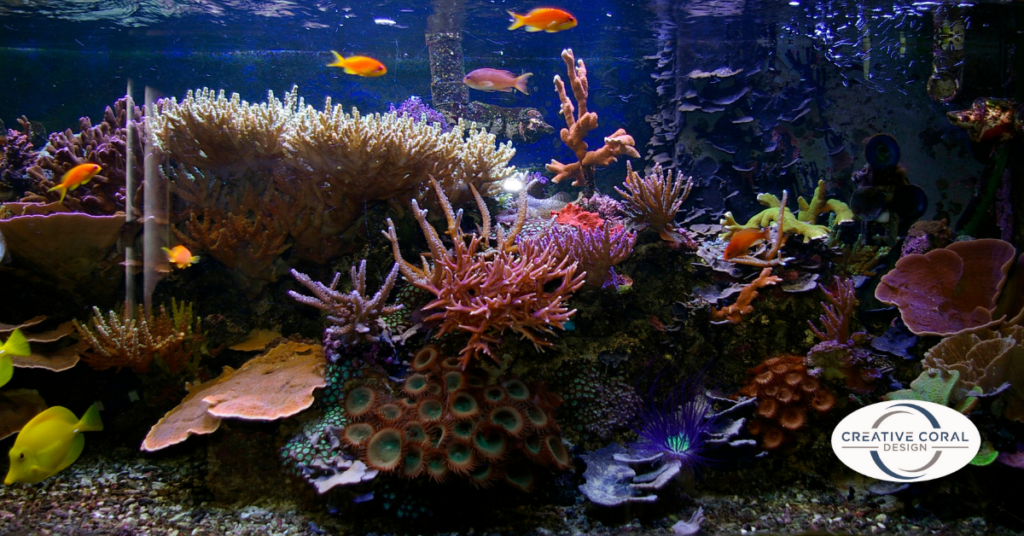
Common Mistakes to Avoid
To ensure the successful incorporation of artificial corals in a saltwater aquarium, be mindful of these common mistakes.
- Overcrowding the Aquarium
Placing too many artificial corals in a compact space can result in a cluttered and unbalanced aquarium. Overcrowding restricts the movement of fish, impedes water flow, and limits the growth of live corals. Being selective with the number and arrangement of artificial corals ensures a visually appealing and spacious environment for the marine inhabitants.
- Poor Placement and Arrangement
Lack of planning and haphazard positioning of artificial corals can lead to an unnatural and disorganized appearance. Random placement may also create obstacles and hiding spots that disrupt the natural behavior and interaction of the aquarium’s inhabitants. Thoughtful arrangement, based on the preferences and requirements of the organisms, guarantees a well-designed and functional aquatic habitat.
- Neglecting Maintenance
Regular maintenance is essential for preserving the appearance and functionality of artificial corals. Neglecting cleaning, pruning, or replacement can result in deteriorated aesthetics and compromised structural integrity. By allocating time for proper care, artificial corals will continue to enhance the overall appeal and health of the saltwater aquarium.
Choose Exhibition-Grade Artificial Corals & Reef Inserts For Your Customized Aquarium
Conclusion
Artificial corals offer an array of benefits that make them a valuable addition to saltwater aquariums. From enhancing aesthetics and reducing maintenance to promoting marine life health and conservation, these synthetic structures create visually captivating underwater landscapes while contributing to the well-being of fish and live corals. By carefully selecting, arranging, and maintaining artificial corals, aquarium enthusiasts can create thriving, natural-looking ecosystems that mimic the beauty of coral reefs.
Creative Coral Design prides itself on an unwavering commitment to excellence in the realm of coral replicas, reef inserts, and bespoke aquarium design services. With a remarkable four-decade-long journey dedicated to the creation and fabrication of artificial coral reefs, freshwater habitats, and themed environments, we’ve solidified our position as industry frontrunners.
Our track record speaks for itself, as we have successfully created and installed unique custom aquariums and themed environments for a diverse range of clients, including residential, commercial, zoos, and seaquariums. Our team consists of experts, master craftsmen, and seasoned aquarium designers who possess the expertise and artistic vision to bring your aquatic dreams to life.
What distinguishes us is our unwavering dedication to excellence. Every coral and reef insert we meticulously craft exemplifies the epitome of quality, captivating both novice enthusiasts and seasoned aquarium aficionados. Furthermore, we understand that each project is unique, and we cater to all budgetary considerations. Whether you are looking to spare no expense or seeking to make every dollar count, our team collaborates closely with you, ensuring your vision transforms into a tangible masterpiece.
Don’t settle for anything less than perfection. Contact us today and discover how our tailor-made solutions can elevate your aquarium to new heights of beauty and sophistication. Trust Creative Coral Design to deliver the exceptional results you deserve.
FAQs about Artificial Corals:
Yes, artificial corals can provide a substrate for the growth of beneficial organisms, such as polyps or algae. These organisms can contribute to the nutrition and growth of live corals, creating a symbiotic relationship within the aquarium.
As long as the artificial corals are positioned appropriately and do not impede the growth or movement of live corals, they generally do not harm other aquarium inhabitants. It is crucial to research the compatibility of artificial and live corals to avoid any conflicts or competition.
No, artificial corals do not require specific lighting or water flow conditions like live corals. They are not photosynthetic and can thrive under a wide range of lighting intensities and water flow rates. This flexibility makes them ideal for a variety of aquarium setups.
With proper care and maintenance, high-quality artificial corals can last for many years. They are designed to be durable and resistant to deterioration, making them a long-lasting option for aquarium enthusiasts. Regular cleaning, pruning, and inspection will help extend their lifespan.
Yes, artificial corals promote environmental conservation by reducing the demand for live corals harvested from natural reef ecosystems. Their use helps minimize the impact on fragile coral reefs, ensuring that marine life, including endangered species, can thrive undisturbed in their natural habitats.




